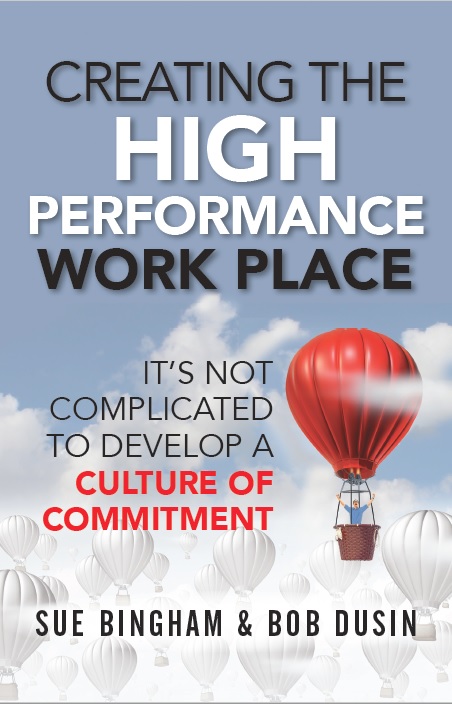There’s many books available which offer a formula for the high-performance work place. Yet it was the sub heading of this book that caught my eye: “it’s not complicated to develop a culture of commitment”.
Now, will this book set your world on fire with radically new ideas? No. But what it does offer is eight very simple, actionable principles.
“it’s time to get back to leading with common sense and kindness” – a quote from the opening chapters, and as I look back on the book now, it’s exactly what journey you will take.
I particularly liked how each principle is presented with what most likely happens in your organisation today (case study), then explores the meaning of each principle, returning to the case study and changing the story by applying the ideas, bringing to life a simple and positive change.
It’s evident Bingham and Dusin bring together several years of successful consultancy through their eight principles, although, due to its succinct nature, it may be lacking challenge for the experienced reader.
But it’s practical; an easy read within a few days, and better still, three of the eight principles are particularly powerful, so much so I put the chapter down and began to practice right away. It caused me to be curious around how close I am to the ineffective side of the case study, and the book contains some easy activities to self-assess.
An interesting concept arises in moving from mediocrity to high performance; with a simple analogy of an airline checks and maintenance. We’d all be a little worried if the supervisor signing off the pre-flight checks said “yeah, that’ll have to do (but really I know you could do better)”. But have a think, how many managers or leaders in your organisation settle for just enough, rather than set high expectations and follow up?
As the world of work continues to gravitate towards a more self-managed and flatter structure, you’ll find value in ‘leading with positive assumptions’, ‘build trust and mutual respect’ and ‘engage and involve employees’. You see? Very simple, actionable principles. But don’t be put off by the apparent basic nature of these, they are really quite fun to challenge how real they are in your work place.
So, in summary, a no-nonsense practical guide with easy to apply principles, leading you to a culture of commitment. For the experienced HR professional, you will have come across some of these principles before, but if you’ve got two or three train journeys upcoming, it’s an easy read.
Chris Furnell – Lead L&D Partner









